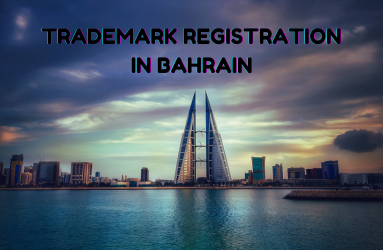Top 10 Intellectual Property Challenges Businesses Face in 2022

Table of Contents
IP Challenges in 2022: Living in a Business-Driven World
Research revealed that entrepreneurs were the main force behind the global economy in 2020. There would be no global GDP to speak of without the contributions of private businesses. By 2022, business activity in Africa will have contributed more than 85 percent to the continent's gross domestic product (GDP). While robust business ideas, products, services, and inventions do contribute to economic growth, the success of these endeavors is not independent of the advantages that IP systems provide to companies, which are exploited to great effect. Due to these successes, there are many IP challenges faced by businesses that must be tackled.
There is no ceiling on the potential profits that can be made from intellectual property for companies that are positioned strategically to make a difference in the world.
Tackling IP Challenges for Businesses
1. Registry Issues, Backlogs, and Delays
Trademark registration typically takes 1 year, according to available data. For patents, time is on your side because there are considerations beyond just novelty and patentability by experts at the registry before registration is commenced.
Within six months or less of filing an application, a trademark or invention is typically assigned to an examining attorney. Any material update, such as an office action or a notice of publication, is typically received after approximately 7 months. Applicants in developed nations, like the United States, can file oppositions within 30 days of the publication date, which is specified in the notice of publication.
As a result of these setbacks, the company may not be able to immediately expand into more lucrative markets, especially given that its products are not yet well-known outside of its immediate vicinity.
Two strategies exist for addressing late registration: first, choose a powerful trademark; and second, where it is an invention, make sure it meets all of the criteria for patentability.
In this manner, the time required to fully appreciate its singularity is reduced. Secondly, if there is any office action or opposition, make sure to respond as soon as possible so as not to further delay the registration process.
2. Lack of Experts in Patent Claims Drafting for Eligible Works
Among the many steps involved in applying for a patent, the most important is probably the drafting of the actual application itself. Legal protection for an invention includes the ability to prevent others from making use of it, but only if the patent claims are written correctly.
Patent claims need to encompass as much of innovative processes as possible while they are still in their infancy.
Additionally, the scope of the invention shifts as more experiments are carried out, necessitating multiple revisions of the patent claims.
For some advice, consider the following:
- Patent claims should be written with the expectation of opposition in mind, and the application should include details that can be used to address concerns that may be raised. Preface your claim with language that does not restrict its applicability, and avoid using functional jargon whenever possible.
3. Cost of Protection
To register a trademark, you can expect to pay between $225 and $325 per class code (not including search or attorney fees). The expense of obtaining a patent is greater and more dispersed among numerous specialists.
Copyright and industrial design protection costs are typically proportional to the maturity of a country's copyright and identification (ID) infrastructure.
Taking advantage of the IP funds made available in many countries for business is the most effective way to deal with the cost of IP protection.
For instance, in January 2022, the European Commission unveiled the EU SME Fund, which contains roughly 47 million euros and is aimed at safeguarding the intellectual property of EU SMEs during their COVID-19 recovery and digital transitions. Businesses can save up to 60% on IP protection thanks to policies similar to those in place in China, the United States, South Africa, and Malaysia.
Today, the world's greatest innovations are being made possible by the protection and commercialization provided by modern intellectual property (IP) systems.
4. Lack of Awareness
When it comes to problems like this, African countries have it worse. The information shows that in Africa, over half of the small and medium-sized enterprises (SMEs) have never heard of intellectual property.
The reason for this is not far-fetched. Despite the fact that businesses are among the most directly impacted by intellectual property rights, little to no effort is made to raise awareness of these rights in the business world.
Businesses miss out on opportunities to increase profits, broaden their reach, and spread their risk by not understanding the value of intellectual property.
The first step in solving this issue is raising public awareness of intellectual property (IP) in media outlets like radio, television, and newspapers, with which business owners frequently engage. Government initiatives promoting IP should be expanded beyond the classroom and into commercial settings.
5. IP Lawsuits
Typically, the price tag for patent litigation processes is between $2.3 and $4 million. Depending on the complexity of the case, patent litigation can take anywhere from one to three years to reach trial.
In addition to the time and money involved, having your IP legally challenged can be disastrous for your company's reputation. To settle intellectual property (IP) disputes, businesses are often urged to look into non-traditional dispute resolution processes.
Although this route can be more expensive overall (due to arbitration fees), it spares businesses the embarrassment and potential ruin that come from losing a high-profile intellectual property lawsuit.
These alternate dispute-resolution strategies also involve subject-matter experts and can be implemented quickly.
6. Portfolio Management
It's safe to say that a company's patent portfolio is its single most valuable asset. A company's intellectual property (IP) portfolio would consist of all of the company's IP assets, including patents, trademarks, designs, trade secrets, and industrial designs.
In-house legal counsel or outside IP attorneys can be retained for the management of the intellectual property portfolio.
Portfolio managers are required to monitor the expiration dates of applications and renew them as necessary; maintain constant communication with clients and the patent office, and perform docketing and budgeting.
If a deadline is missed, the IP owner risks losing their rights to the property. Effective IP portfolio management can affect customer satisfaction, reveal untapped market opportunities, and mitigate risk.
7. Piracy
Every year, piracy costs the music industry a whopping $2.7 billion in revenue. The future looks grim for these numbers, experts say. Piracy impacts creators, companies, and employees alike. In the United States alone, the annual loss of revenue from piracy is equivalent to nearly 70,000 jobs.
Companies are seeing a decline in their brand awareness and customer confidence as a result of this. A good case in point is the well-known board game manufacturer CATAN, which has seen an uptick in complaints from dissatisfied customers ever since the market was flooded with online counterfeits.
In an effort to combat online piracy, many businesses are turning to anti-piracy programs. Experts in intellectual property (IP) who can keep an eye on the market for signs of infringement are employed to combat more conventional forms of piracy.


8. Protecting Business Concepts and Invention Stages
A company's underlying concept is the idea that drives its success. A business plan, in its simplest form, is a well-thought-out framework outlining the essential elements needed to launch and sustain a successful enterprise, such as the company's offerings, its products or services, the reasons why the concept is novel, and the means by which the products or services will be delivered to the intended market.
Business ideas are the equivalent of the various phases of the invention. Until an invention is finished and in a fixed form, it is not protected by intellectual property law. The implication of this is that should these ideas be stolen, a prospective business loses out completely. This is one of the common cases of IP challenges.
One possible solution is to write down these ideas and procedures in a clear and concise fashion; this would make them eligible for protection under copyright legislation.
In addition, companies can use WIPO Proof, a piece of software created by the World Intellectual Property Organization, to assist companies in producing evidence of the digital file of a completed asset.
9. Outdated IP Laws
The trend toward commercializing the internet in business has reduced the importance of personal contact. Plant variety protection (PVP) and other technological developments are also being accounted for in modern IP law.
Plant Variety Protection (PVP) rules are in place to safeguard farmers' legal rights and unique plant varieties, while also providing exemptions for the private use of protected genetic material. Intellectual property benefits for businesses are constrained by the absence of IP laws that take into account the development of technology in the digital space and PVP.
For instance, despite Africa's high concentration of farmers, the continent's antiquated legal codes make no mention of PVP. This problem can be tackled by policymakers as well as the government.
10. IP Documentation
The term "IP documentation" is used to describe comprehensive IP agreements that safeguard a company in every way. Inexperienced IP attorneys hired by companies to resolve IP issues often struggle to properly document their work; however, any shortcoming on the part of the Attorney inevitably impacts the company.
Typical IP agreements should include non-disclosure clauses, representations and warranties, employee-related issues, and indemnifications, as well as anticipate future challenges that are likely to arise.
Conclusion
Lastly, none of the aforementioned IP challenges can be resolved without the assistance of knowledgeable IP practitioners who offer field-specific guidance and services to help businesses succeed in IP-centric environments. Abou Naja's team of experts is available to assist your company in standing out and maximizing the benefits of intellectual property.
Write to us at [email protected] or schedule a complimentary and comprehensive consultation here, to help you and your business effectively tackle the discussed problems that new-world businesses face.
Frequently Asked Questions
What are the main challenges facing businesses in terms of IP protection?
The main challenges are registry issues, backlogs, delays in trademark and patent registration, lack of experts in patent claims drafting, the cost of protection, lack of awareness of IP rights among SMEs, and IP lawsuits.
What are the steps involved in the patent registration process?
The most important step in the patent registration process is the drafting of the actual patent application, which needs to encompass as much of the innovative processes as possible and be written with the expectation of opposition in mind.
What is the cost of trademark registration?
To register a trademark, one can expect to pay between $225 and $325 per class code, not including search or attorney fees.
What is the issue with IP awareness among SMEs?
In Africa, over half of the SMEs have never heard of intellectual property due to a lack of awareness-raising efforts in the business world.
What is the impact of IP lawsuits on businesses?
IP lawsuits can be time-consuming and expensive, with a price tag of between $2.3 and $4 million. They can also be detrimental to a company's reputation.
What is the solution to the lack of awareness of IP rights among SMEs?
Raising public awareness of IP through media outlets and government initiatives that reach commercial settings is the first step in solving the lack of awareness issue.






